Pick a few new tasty carbs and get ready to experiment!
15/12/2020 # Home
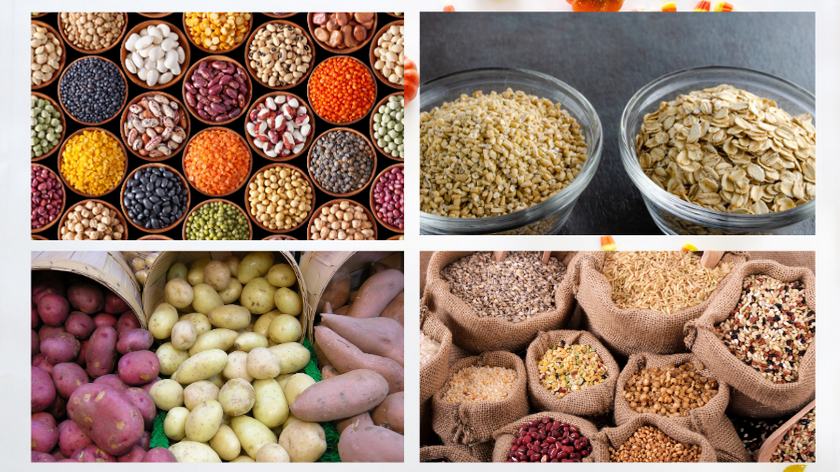
We don’t believe in “good” or “bad” foods. But we do like variety. And experimenting.
So here are five lesser-known but seriously nutritious carbs to try as part of your new habit.
Five fresh ideas
Try incorporating these often under-appreciated smart carbs into your diet.
- Beans and legumes
- Sweet potatoes
- Ancient grains
- Sprouted grains
- Steel-cut oats
We’ll tell you more about how to cook them in our next blog.
Today, just think about whether you could add any of these for variety . . . or, if you already enjoy them — whether you could try a new recipe.
Beans and legumes
This category includes things like:
- Lentils
- Green peas
- Black beans
- Kidney beans
- Garbanzo beans (also known as chickpeas)
- Navy beans
- Black-eyed peas or cowpeas
- Lima or fava beans

Try any kind that sounds interesting to you — and that you can tolerate without too much gas.
(Note: The gas from legumes typically subsides after a week. And different people may be sensitive to different legumes. So, if one type of beans doesn’t work for you, try a different kind.)
Beans/legumes aren’t just high in fiber and a decent source of protein, they also taste great.
For instance, try:
- refried beans (choose varieties with fewer chemicals and processed ingredients) atop a chicken breast or beef with some salsa.
- adding beans to a salad or lentils to a vegetable soup.
- grabbing some hummus and baby veggies as a quick, quality snack.
- making a three-bean chili with some lean protein and vegetables.
Canned beans or lentils make it quick and easy to incorporate these nutritional gems into your repertoire.
Sweet potatoes
You might know these as “yams”, but true yams are another type of starchy root that we rarely see in North America.
When stripped of crud like corn syrup and marshmallows (or maybe that’s just our Great-Aunt Bertha’s Southern cooking skills), sweet potatoes are actually a pretty awesome starchy carb source.
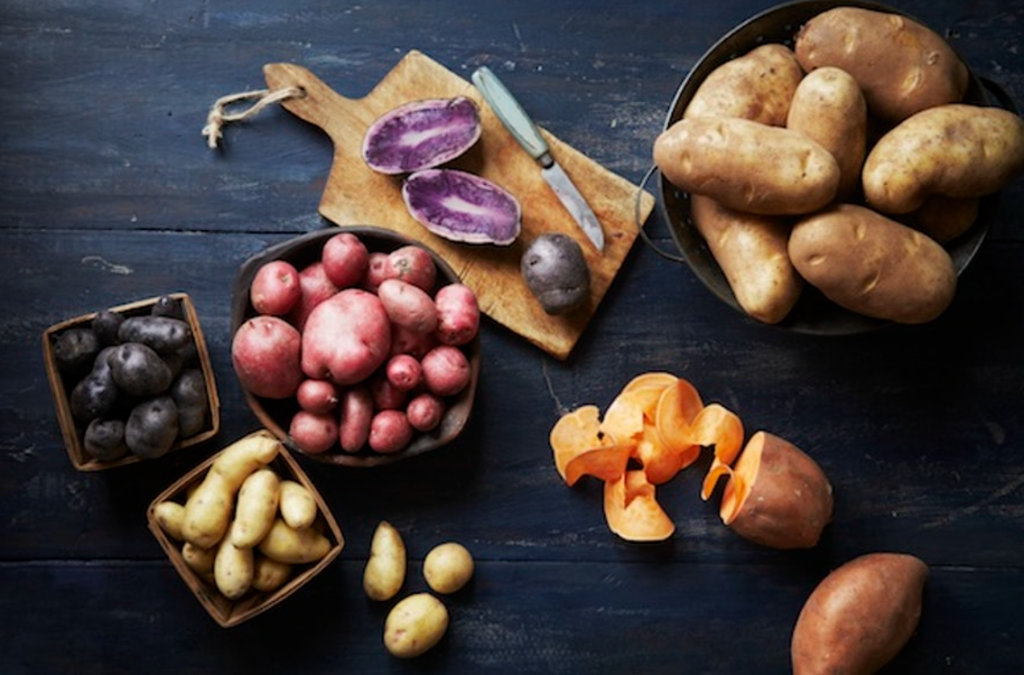
First, sweet potatoes come in different colors.
There are hundreds of varieties worldwide. The orange and purple ones are very high in beneficial phytochemicals and vitamins. (Remember: Eat the rainbow!)
Second, sweet potatoes are nutrient powerhouses.
One handful contains one-third of your daily requirement for vitamin C and 385% of your daily requirement for Vitamin A! They’re also high in vitamin B6, potassium, and manganese. There’s even a few grams of protein in there. Score.
Third, although sweet potatoes are starchy and sweet-tasting, they’re still slow-digesting and also relatively high in fiber.
You can do all the things with sweet potatoes that you’d do with regular potatoes: roast them, purée them into soups or mashes, bake them into “fries”, spiralize them into “noodles”, substitute them for some flour in baking, shove them into a potato gun . . .
They’re versatile, nutrient-dense, and tasty. Our kinda food.
Feel free to try colorful varieties of regular potatoes too. Purple, red, gold — they’re all good.
Ancient grains
Our ancestors around the world knew the nutritious potential of traditional grains, such as:
Amaranth is native to Central and South America; it’s traditionally eaten straight, brewed into beer, or even popped like popcorn.
Quinoa comes in a variety of colors, including black and red. The Incas called it “mother of grains” and used it as one of their chief sources of nutrition.
Sorghum is native to northern Africa and is still a traditional food there, as well as across southern Asia. Many North Americans and Europeans have never heard of it, and yet worldwide, it’s the fifth most important cereal crop after rice, wheat, corn and barley.
Teff, one of the tiniest grains in the world, is used to make injera, a traditional Ethiopian flatbread.
Wild rice — an aquatic plant — was (and still is) harvested by indigenous North Americans, who would shake the tall grass seeds into canoes to collect them.
All of these ancestral grains are packed full of fiber, nutrients, and delicious distinctive taste. They’re also higher in protein than modern grains.
You can turn them into side dishes, cook them up like porridge, or even grind them into flour (use a coffee grinder) for things like pancakes and muffins.
Below:
- Toasted buckwheat
- Millet
- Oat groats (whole oats)
- Red quinoa
- Black quinoa
- Quinoa
- Black quinoa
- Kamut
- Teff
- Amaranth
- Wild rice
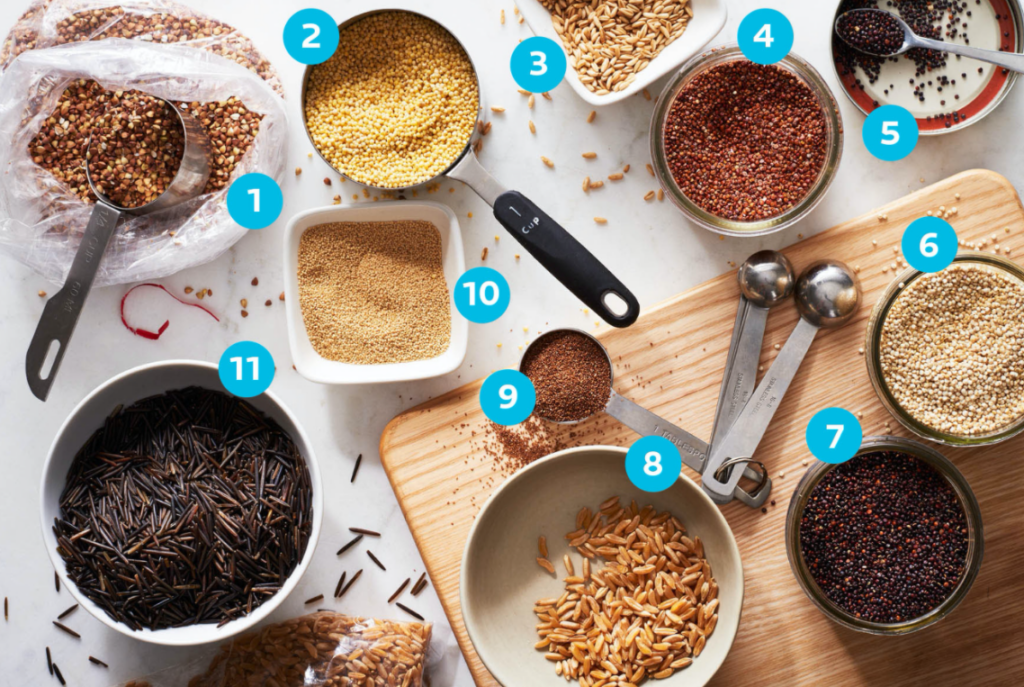
Sprouted grains
Sprouted grains are grains that have been soaked for about 24 hours, and allowed to germinate for about one week.
This sprouting process :
- decreases anti-nutrients (substances that can interfere with the absorption of other nutrients), gluten and other allergens;
- makes the grains more digestible;
- increases vitamin and mineral content;
- improves the protein quality; and
- increases the soluble fiber of grains.
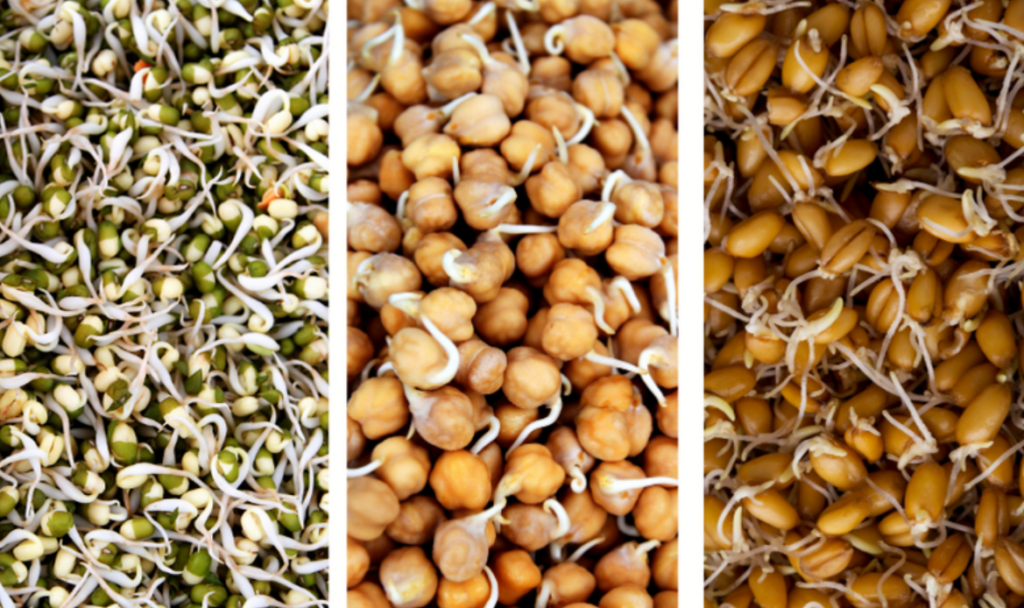
That’s a pretty impressive list of benefits!
Interestingly, research is starting to investigate sprouted grains, and has found some promising results.
So far, sprouted grain consumption has been found to:
- decrease blood pressure;
- improve glucose control;
- decrease cholesterol and triglycerides;
- improve immune function; and
- protect against fatty liver.
There are many sprouted grain products available today. Food For Life makes our favorite products, but there are other good companies as well.
A couple of notes:
- Many sprouted grain products are made without preservatives. Keep them in the fridge or freezer until you’re ready to use them.
- Sprouted grain breads usually taste best toasted, as the enzymatic browning brings out the best flavors and aroma. Science!
Steel-cut oats
Steel-cut oats are another great source of fiber and have more protein than any “popular” cereal.
Many folks have never seen steel-cut oats. Whole oat grains actually look much like brown rice. Steel-cutting just chops them up a bit, so you still have most of a whole grain.
Rolled oats, in contrast, are slightly more processed.
They are steamed, rolled, steamed again, and toasted. They look like flattened ovals. A small portion of the fiber and nutrients can sometimes be lost in this refinement.
Here’s a comparison of 4 types of oats, from most to least processed.
- Instant oats
- Rolled oats
- Steel-cut oats
- Whole oat groats
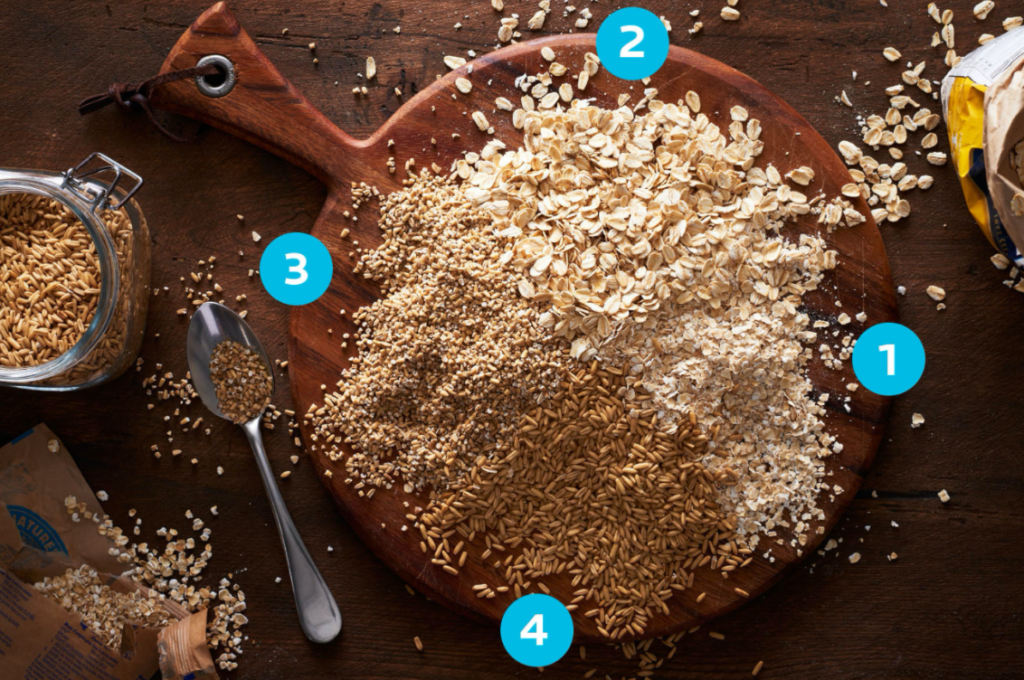
Rolled oats aren’t “bad”, of course. Just consider steel-cut oats — or even whole oat grains, if you wanna go “next level” and try something new —as an even less-processed option.
If you’re feeling really adventurous, try throwing some of the other cooked ancestral grains into your morning oats as well.
If you want to learn about the PA Coaching, PA Home program or the PA Strength and Conditioning program or want to subscribe for it then click below:
